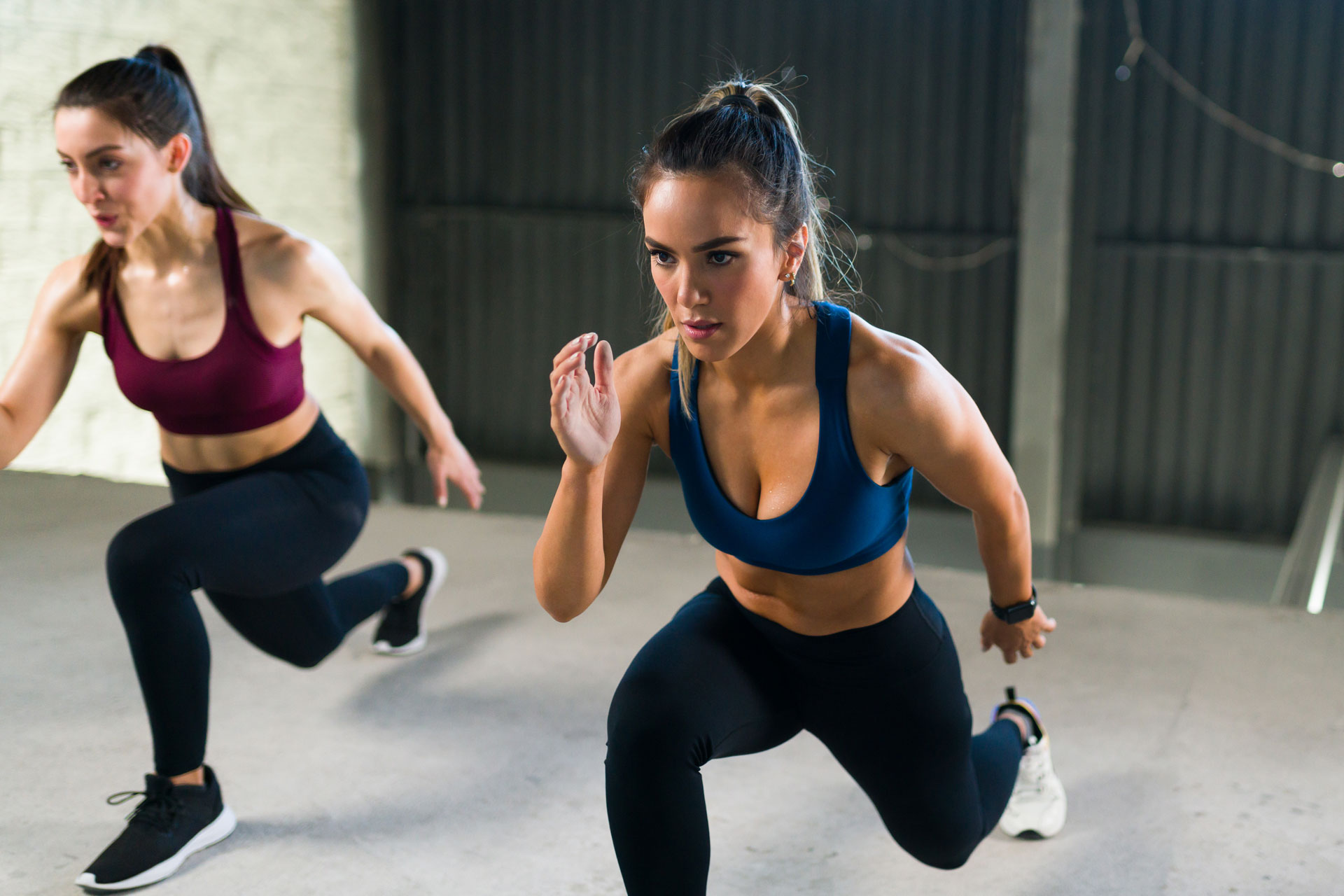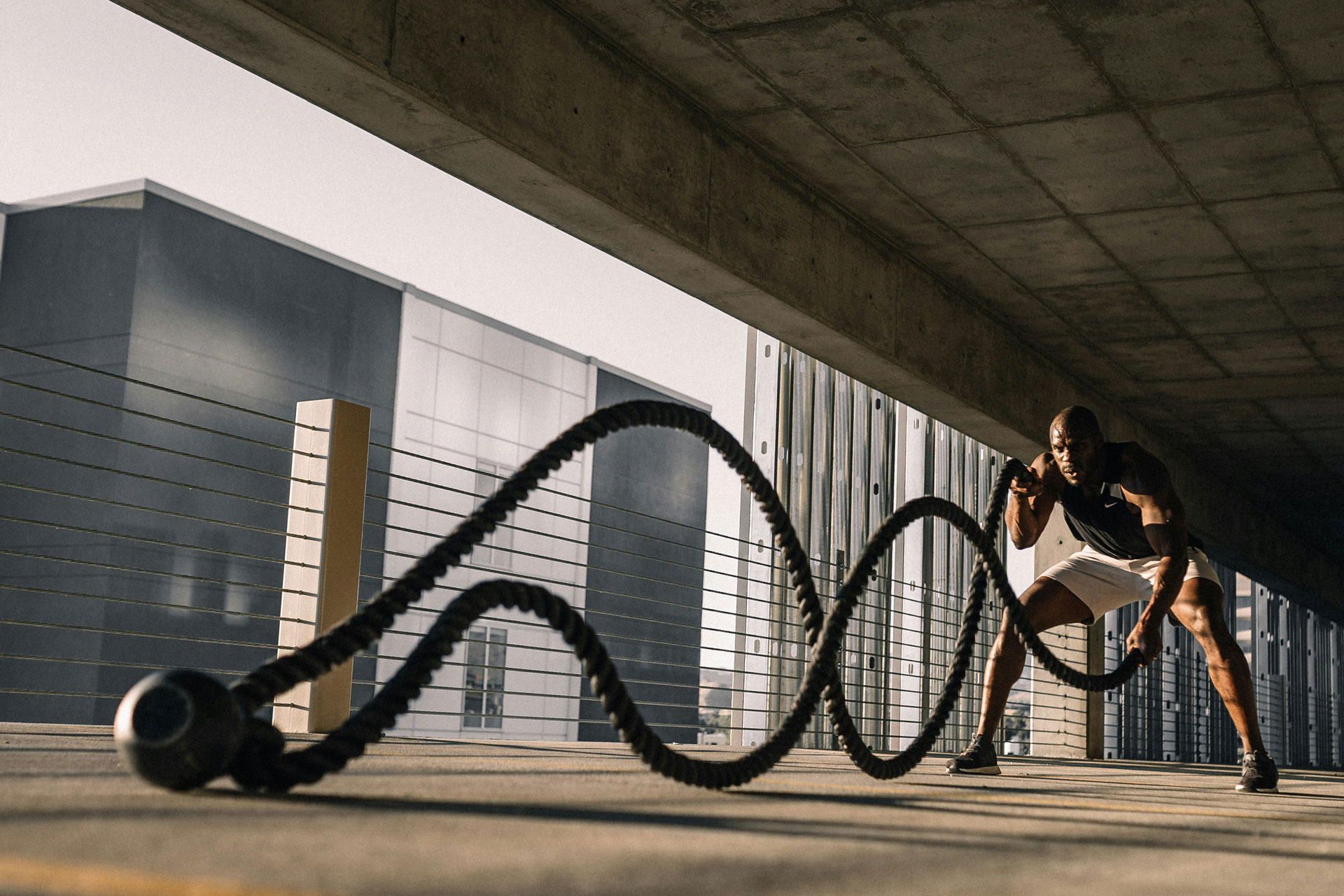Is HIIT Training Worth The Hype?
By
12 months ago
The benefits and risk factors of high-intensity exercise

High-intensity interval training, widely known as HIIT, has been a buzzword in the fitness industry for some time now. Offering a hardcore workout in a short amount of time, it’s popular with time-poor individuals keen to get their cardio in without spending hours pounding the pavements. However, some fitness professionals deem it overrated – and this intense style of exercise may not be suitable for everyone. Here’s everything you need to know about HIIT workouts.
High-Intensity Interval Training: Everything You Need To Know
What Is HIIT?
HIIT is a type of interval training which involves short bursts of high-intensity exercise followed by periods of rest. It varies in terms of the length of exercise and rest periods, and the number of rounds, but the idea is to challenge your cardiovascular system, which means bouts of maximal effort (90 percent or above). The clue’s in the name: it’s all about high intensity – whether that’s bodyweight exercises (think jumping jacks and burpees), weighted exercises (kettlebell swings, squats etc.) or using cardiovascular equipment, like the treadmill or a rowing machine.

What Are The Benefits Of HIIT Training?
Efficiency
One of the main draws of HIIT is its efficiency. ‘People often say they are short on time and can’t workout,’ says personal trainer Aimee Victoria Long. ‘HIIT workouts can provide an option that will cut down workout times – you can do a HIIT workout in a 20-minute window and still burn a large number of calories.’
Increases Post-Exercise Metabolism
Better still, the effects of HIIT last long after the exercise is finished. ‘There are some evidence based papers that show following HIIT workouts keeps your metabolic rate high, meaning you burn more calories at resting,’ explains Aimee. ‘If fat loss is a goal of yours then this could be a reason to use this form of training.’
Increases VO2 Max
There’s plenty of evidence to show regular HIIT workouts will improve your general fitness and endurance levels, too. This style of training pushes you into your anaerobic threshold (the exertion level between aerobic and anaerobic training), and helps increase your VO2 max, which is the maximum amount of oxygen your body is able to use during exercise. Your VO2 max is a good indicator of your fitness performance – and a higher VO2 max means you can work out better and for longer.
‘HIIT training can help improve oxygen consumption,’ says Aimee. ‘Whereas previously it has been thought that long runs or other forms of cardiovascular work were the only way to improve this, in recent years it has been shown that HIIT training can also actually help improve oxygen consumption levels. Some studies have shown the adaptations actually took less time than your conventional aerobic methods.’
Improves Heart Health
Other studies have shown HIIT can help reduce heart rate and blood pressure, particularly for obese or overweight people. One study, for instance, found that a group of people who did HIIT training three times a week for 20 minutes reaped the same benefits to their blood pressure as a group who completed endurance training for four days a week for 30 minute-sessions.
Other benefits include:
- Reduces abdominal and subcutaneous fat (the type of fat that’s stored just beneath your skin)
- Weight loss
- Helps build muscle
- You can do it without any equipment
Who Might HIIT Not Be Suitable For?
‘Whilst a lot of people love HIIT training, there are some demographics that should avoid it, ‘ says Aimee. ‘Anyone with joint issues being one of them – HIIT training has a high impact on your joints, especially your knees, ankles and hips. Use other forms of exercise if this is something you suffer from.’
She also advises against HIIT if you’re a beginner to exercise, as it could result in injury. ‘The workouts can include complex exercises and you should build up your fitness levels and strength using more conventional methods like resistance training and aerobic work.’
The hormonal effects are also important to bear in mind: HIIT is a stressor to the body, and can cause our cortisol levels to spike. Consequently, Aimee says it may not be suitable for women suffering from polycystic ovaries (PCOS). ‘HIIT training is short, sharp, fast and hard – this can cause stress on the body. Not all stress is bad, however if you’re suffering from PCOS, managing your cortisol levels is key and HIIT training can cause your cortisol levels to spike. As PCOS can cause weight increase, you may think you need to work harder and push yourself more, but this isn’t the case.’

How Often Should You Do HIIT?
It’s important not to overdo it with all exercise, but particularly so with HIIT. As mentioned above, this type of training can spike our cortisol levels, and high levels of cortisol over a long period of time can cause symptoms such as bloating, digestive issues and weight gain. Plus, as with all exercise, too much of it can lead to burnout and demotivation.
Experts are divided on what the right amount is – and everyone has different goals and abilities. The American Council on Exercise recommends doing HIIT one to two times per week, alongside other forms of exercise, such as strength training, low-intensity cardio training, Pilates or yoga. It’s widely agreed that daily HIIT workouts are too taxing on the body: ensure you have at least one rest day or low-intensity exercise day in between.









